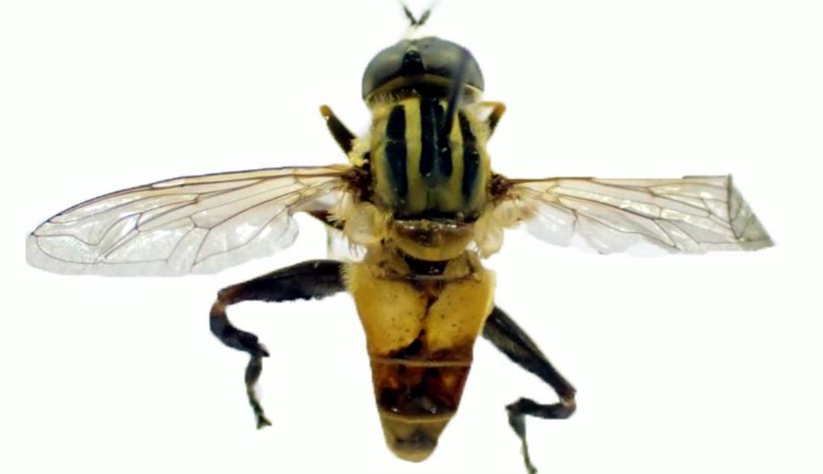Two Flower Fly Species Reported from Kerala for the First Time
The genus Mesembrius Rondani,1857 is an Old World genus comprising about 58 species across various regions such as the Oriental, Australasian, and Afrotropical regions, and the Mediterranean Basin of the Palaearctic Region. They belong to the subfamily Eristalinae within the tribe Eristalini.
Flower Fly Research by Shadpada Entomology Research Lab
Recently, an interesting discovery was made by researchers from the Shadpada Entomology Research Lab (SERL) at Christ College in Irinjalakuda. This team, led by research scholar, Athul Sankar C., along with Assistant Professor Dr. Bijoy C. and Associate Professor, Dr. Shaji E.M., identified two species of flower flies, Mesembrius bengalensis and M. quadrivittatus, in the Kole wetlands and Vilagan Kunnu hillocks of Thrissur district. This is the first time these species have been reported in Kerala.
Ecological Importance of Flower Flies
Flower flies, belonging to the family Syrphidae, play a crucial ecological role. These flies have evolved to mimic bees and wasps, aiding their survival by deterring predators. Beyond their survival strategy, flower flies are pivotal as pollinators and their larvae serve as biological control agents and nutrient recyclers. This ecological role underscores the importance of documenting and understanding their distribution and behavior.
Contribution to Entomological Research
The findings of this team have been published in ENTOMON, a reputed journal in the field of entomology. The research not only adds species to Kerala’s faunal list but also enhances the biological understanding of the region. A literature survey conducted by the team reported a total of 59 species of flower flies in Kerala before this discovery, indicating a rich biodiversity.
The Research Methodology and Findings
Athul Sankar C. and his team used entomological methods, including stereozoom microscopes and digital imaging, to document the distinct characteristics of these species. The key features and images of these species have been made available for public access and use, promoting community engagement in biological studies and conservation efforts.
Implications for Conservation and Future Research
These discoveries are crucial for conservation strategies as they provide insights into the habitat preferences and geographical distribution of flower flies. Understanding where these species thrive can help in crafting policies and measures to protect these vital pollinators. The research team’s efforts also set a foundation for future ecological and entomological studies in the region, potentially leading to more discoveries and enhanced environmental conservation.
About SERL
Shadpada Entomology Research Lab (SERL) was established on 1st August 2019 under the Department of Zoology, Christ College (Autonomous), Irinjalakuda, Thrissur, Kerala, India under the guidance of principal investigator Dr. Bijoy C. The main focus of the lab is to conduct research and provide MSc dissertations, summer training, and PhD programs in the taxonomy of insects, their bio-ecology, and diversity. The lab also conducts outreach programs through identification services, short training programs, invited talk series, commemorative day celebrations, and various competitions like quizzes and BioBlitz. There are ongoing doctoral works on the taxonomy of lesser known insect groups like solitary bees, cuckoo wasps, antlions, grasshoppers, flower flies, robber flies etc.
Month: Current Affairs - July, 2024
Category: Environment Current Affairs


